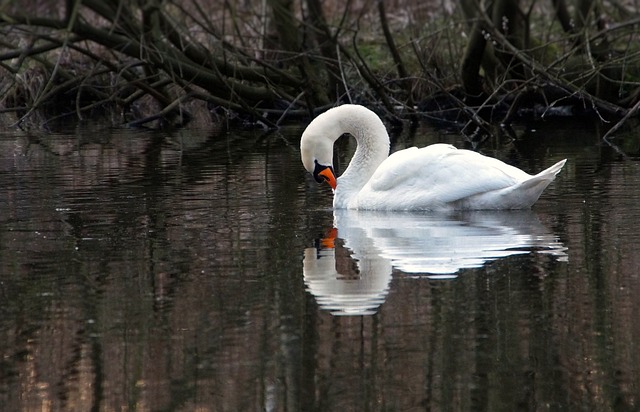When contemplating end-of-life arrangements, comparing the costs of cremation versus traditional burial is crucial for making a financially and personally aligned decision. Cremation typically presents a more economical option by eliminating embalming, caskets, and vault expenses, offering a cost-effective alternative that still allows for meaningful ceremonies and personalization. Traditional burials, while including the funeral service, entail perpetual care fees, headstone costs, and mandatory grave liners or vaults, leading to higher long-term expenses. The decision should account for both personal preferences and financial considerations, as cremation services' costs can vary from basic options to more elaborate memorials. It's important to research the full range of cremation services—including the use of a crematory, legal documentation, urn selection, potential future ground burial costs, and additional ceremonies—to ensure that the chosen arrangements meet your needs without exceeding your budget. As societal views shift, cremation is increasingly favored for its affordability and flexibility in memorialization, making it a significant consideration in end-of-life planning.
When contemplating end-of-life arrangements, individuals and families face a myriad of decisions, chief among them being the choice between cremation and traditional burial. This article delves into the financial implications of each option, providing a comprehensive examination of cremation services versus burial costs. It dissects the associated expenses, from basic options to more elaborate ceremonies, offering a clear-eyed look at the price tags attached to both practices in today’s society. Join us as we navigate the economic dimensions of these end-of-life choices, ensuring informed decisions for those planning ahead or making immediate arrangements.
- Understanding the Financial Considerations of Cremation vs Burial Services
- Breaking Down the Costs: Cremation Service Options and Associated Expenses
- Comparative Analysis: The Price Tag of Traditional Burial Against Cremation in Modern Society
Understanding the Financial Considerations of Cremation vs Burial Services

When contemplating end-of-life arrangements, understanding the financial considerations between cremation and traditional burial services is crucial for individuals and families alike. Cremation often presents a more cost-effective option when compared to traditional burial services, with upfront costs that are generally lower. This initial savings with cremation is partly due to the elimination of expenses associated with embalming, a casket, vault, and the maintenance of a grave site over time. Additionally, cremation service options are diverse, ranging from simple ceremonies to more elaborate ones, allowing for customization that can align with one’s budget and preferences. On the other hand, burial costs encompass not only the funeral service itself but also ongoing perpetual care fees for the cemetery plot, a headstone, and additional expenses for a grave liner or vault, which are mandated in many cemeteries to prevent ground subsidence. These factors contribute to the higher overall cost of traditional burial services, making cremation a financially prudent choice for many when considering long-term financial implications. It’s important for individuals to assess their personal needs and budgetary constraints while carefully comparing the costs associated with each option to make an informed decision that respects both their wishes and their wallet.
Breaking Down the Costs: Cremation Service Options and Associated Expenses

When contemplating end-of-life arrangements, understanding the costs associated with cremation service options is paramount. Cremation, as a whole, often presents itself as a more affordable alternative to traditional burial. However, the spectrum of expenses involved in cremation services can vary widely based on a multitude of factors. Typically, the process includes basic costs such as the use of the crematory, the cremation procedure itself, and the necessary permits and documentation. Beyond these essential elements, families may choose additional services that can affect the total cost. These may range from simple ceremonies in a crematory’s chapel to more elaborate memorial events at a place of worship or funeral home. The selection of an urn, memorial stone, or keepsake items also contributes to the overall expense. Additionally, some individuals opt for cremation with the intention of future burial, which involves subsequent costs for the interment of the urn in a columbarium or cemetery plot. It’s crucial to explore these options and associated expenses thoroughly to make an informed decision that aligns with one’s financial considerations and personal preferences.
Comparative Analysis: The Price Tag of Traditional Burial Against Cremation in Modern Society

In modern society, the decision between traditional burial and cremation is a significant consideration for individuals planning for end-of-life arrangements or families making end-of-life decisions. Traditional burial, often involving embalming, a casket, a vault, and a plot in a cemetery, typically carries a higher price tag than cremation services. The cost of a traditional burial can range from a few thousand to tens of thousands of dollars, depending on regional differences, cemetery fees, and chosen burial options. This includes the purchase of a burial plot, which is a permanent investment as it reserves a space for the interment of the deceased. In contrast, cremation services present a more affordable alternative, with costs that vary widely based on the type of cremation service selected. Basic cremation may involve only the crematory fee and the cost of a simple container or urn, potentially saving families thousands of dollars compared to traditional burial. Additional services such as a memorial ceremony, a viewing or visitation before cremation, or an urn and a scattering ceremony can also be included, which may increase the overall cost but still tend to be less expensive than full-service funeral arrangements. It’s important for individuals to compare these costs carefully and consider their personal preferences and financial circumstances when making this decision. Cremation services offer not only budgetary advantages but also flexibility in memorialization and remembrance, making them an increasingly popular choice in contemporary society.
When contemplating the end-of-life choices for oneself or a loved one, it’s clear that both cremation and traditional burial come with their own set of financial considerations. Our exploration into the costs associated with each option reveals that cremation services often present a more economical alternative to traditional burials, offering diverse and affordable options for families. The comparative analysis indicates that while traditional burial can include substantial expenses, cremation provides a cost-effective solution without compromising on dignity or memorialization. Ultimately, the decision between these two revered practices rests on personal preference, cultural significance, and budgetary constraints. Prospective planners are encouraged to thoroughly review the costs and services available, ensuring they make an informed choice that aligns with their values and financial means. For a comprehensive understanding of the expenses involved in both cremation and burial, it’s essential to consider the detailed breakdown provided in our article.
